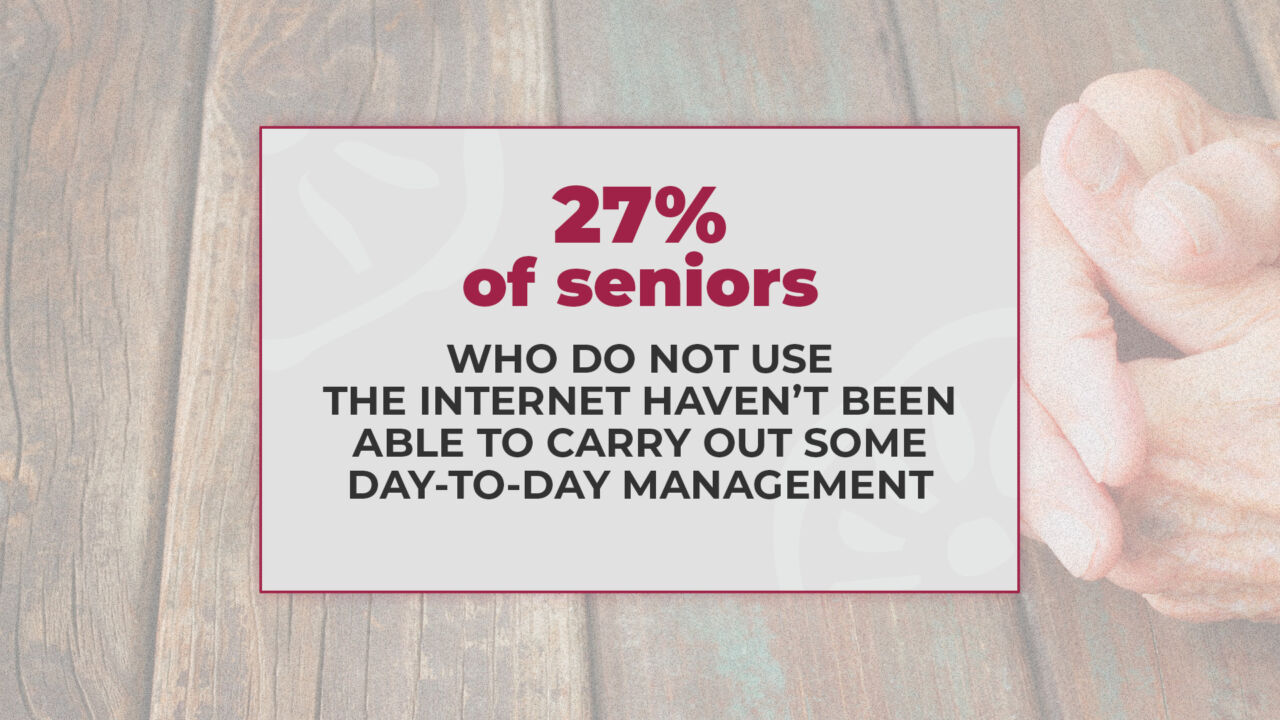
Digital technology and older people:
how to adapt against the digital GAP
Digital technology and older people:
how to adapt against the digital gap



The report “How to improve the usability of digital technologies for older people” addresses the challenges and strategies for bridging the digital divide in the creation and adaptation of digital services for older people.
The report “How to improve the usability of digital technologies for older people” addresses the challenges and strategies for bridging the digital divide in the creation and adaptation of digital services for older people.
The demographic challenge, with an increasingly ageing population, requires the development of a range of products and services aimed at older people and their environments. This is the area of the silver economy.
The Nagusi Intelligence Center (NIC) of the Diputación Foral de Bizkaia is an observatory that seeks to offer services and solutions to companies working in the silver economy. The NIC has published, with the collaboration of Antares Consulting, the monographic report “How to improve the usability of digital technologies for the elderly”. This report analyses the use that older people make of digital technologies and the problems they face, mainly the digital divide.
The digital divide and its effects on the daily lives of older people
Information and communication technologies (ICT) are increasingly present in all areas of life. The COVID-19 pandemic has further boosted the frequent use and deployment of these technologies in areas such as banking and healthcare. However, the problem of the digital divide is becoming increasingly apparent: the lack of adaptation of these technologies to older people means that they have difficulties in day-to-day operations such as checking their bank balance, contracting services or requesting appointments at health centres. The digital divide thus undermines the right of older people to participate fully in society.
The exceptional situation of the pandemic has meant that older people, who are less technologically literate because they are not digital natives, have started to learn how to use ICT, although there is still a long way to go. An INE survey in 2021 found that 27.9% of people aged 74 and over had used the internet in the months prior to the survey, compared to 23.4% in 2019. However, the same survey also shows that only 17.1% of older people who use the internet use it on a daily basis. The Digital Divide Report (“Informe sobre brecha digital”) of the Mayores UDP, published in 2021, points out that “almost three out of every ten older people who do not use the internet say that they have not been able to carry out everyday tasks because they could only be done via the internet or on a machine (27.1%)”.
Challenges, strategies and examples for fighting the digital divide
In a reality where the daily use of ICT is becoming more and more essential, and with the growing interest of older people in going digital, the silver economy needs to take into account what factors affect the digital divide and how it can be addressed. The report “How to improve the usability of digital technologies for older people” sets out the main challenges faced by actors in the silver economy in improving the usability of digital technologies for older people. In its second chapter, the report outlines the most common strategies to respond to these challenges. The last chapter of the report provides examples of projects at national and international level where these strategies have been used.
Conclusions of the report
The report “How to improve the usability of digital technologies for older people” draws three main conclusions:
- The digital divide between generations is narrowing, which is both an opportunity and a challenge. Bridging the gap means increasing the number of older people using digital technologies, but at the same time it also means being even more aware of new needs for support and accompaniment for these people. In addition to the lower level of knowledge due to the fact that they are not digital natives, there is also the deterioration of chronological age, which requires taking into account the needs of users with difficulties that go beyond knowledge of ICT use.
- Strategies to improve the usability of digital technologies by older people require combining different approaches to address multiple challenges. Adapting ICT for older people presents challenges such as adapting design to make it accessible or aspects such as improving cybersecurity for people who are not digital natives. However, this does not mean that all challenges have to be tackled at the same time: the strategic challenge for technology companies in the silver economy is to select the relevant factors for each type of product or service and to create synergy between these factors.
- The design of ICT-enabled services for older people should not be for them, but with them. Some of the examples given in the report demonstrate the need to use co-creative innovation methodologies that incorporate older people (and therefore future users) from the first design phase. This allows for first-hand knowledge of the barriers of older people in concrete and operational situations of everyday life, allowing tools to be adapted to meet their needs correctly. At this point, the report adds two other key ideas: the elderly are a very heterogeneous group, and their knowledge and use of ICTs is strongly influenced by the environment and community in which they live. These two aspects of the diversity of the group must be taken into account in this co-design.


